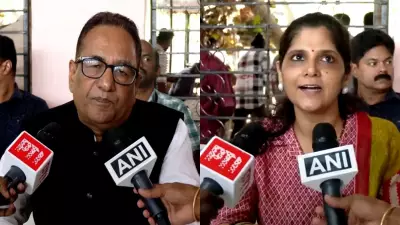
India stands at a dangerous crossroads where progressive road safety legislation clashes with grim reality. The Motor Vehicles (Amendment) Act, 2019, hailed as a landmark reform, promised to revolutionize road safety with stricter penalties and comprehensive measures. Yet, the nation continues to witness an alarming rise in road fatalities, raising critical questions about implementation gaps.
The Legislative Promise Versus Ground Reality
The 2019 amendment introduced revolutionary changes: hefty fines for traffic violations, improved vehicle standards, and enhanced protection for vulnerable road users. The legislation specifically addressed critical areas including:
- Substantial increase in penalties for traffic offenses
- Mandatory insurance coverage for all road accident victims
- Strict regulations for vehicle manufacturers
- Enhanced accountability for road contractors
- Protection for Good Samaritans
Despite these comprehensive measures, the National Crime Records Bureau data reveals a disturbing trend of increasing road deaths across Indian states.
The Implementation Challenge
The gap between legislation and execution remains vast. Several factors contribute to this disconnect:
- Inconsistent Enforcement: While some states rigorously implemented the new penalties, others showed reluctance, creating uneven safety standards across the country.
- Infrastructure Deficiencies: Poor road engineering, inadequate signage, and missing safety features continue to pose significant risks to commuters.
- Behavioral Resistance: Deep-rooted habits among drivers and pedestrians alike undermine safety measures, requiring sustained awareness campaigns.
- Administrative Hurdles: Coordination between multiple agencies remains challenging, slowing down the implementation of integrated safety systems.
Vulnerable Road Users Bear the Brunt
Pedestrians, cyclists, and two-wheeler riders constitute the majority of road accident victims. The legislation specifically addresses their protection, but ground-level implementation remains inadequate. Poor pedestrian infrastructure, mixed traffic patterns, and speeding vehicles continue to endanger vulnerable commuters.
The Way Forward: Beyond Legislation
Addressing India's road safety crisis requires a multi-pronged approach that goes beyond legislative reforms:
- Integrated Urban Planning: Cities need dedicated pedestrian pathways, cycling tracks, and improved public transport systems
- Technology Integration: Automated enforcement systems, intelligent traffic management, and digital monitoring can enhance compliance
- Capacity Building: Training programs for traffic police, road engineers, and emergency response teams are crucial
- Public Awareness: Sustained campaigns targeting behavioral change among all road users
- Data-Driven Interventions: Using accident data to identify black spots and implement targeted improvements
The time has come to bridge the gap between legislative intent and practical implementation. As India continues its rapid urbanization and motorization, ensuring road safety is not just a legal obligation but a moral imperative that demands collective action from policymakers, enforcement agencies, and citizens alike.





